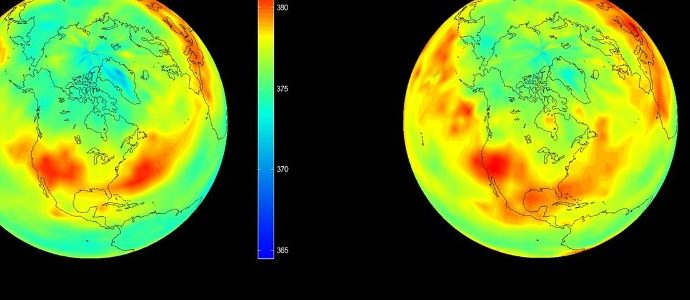Global CO2 Levels Continue to Rise, Now More Than 50% over Pre-Industrial Levels
The annual peak in atmospheric carbon dioxide levels hit a new record high this May, averaging 421 parts per million (ppm), an increase of nearly 1.9 ppm over this time last year, and more than 50 percent higher than the pre-industrial average of 280 ppm. Atmospheric CO2 levels fluctuate overread more
